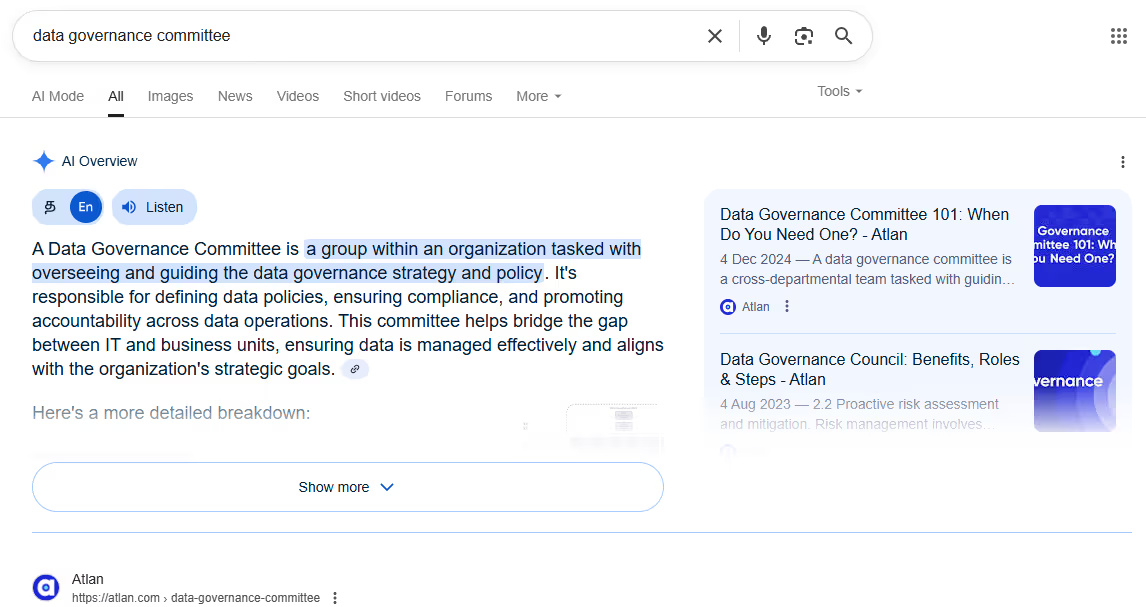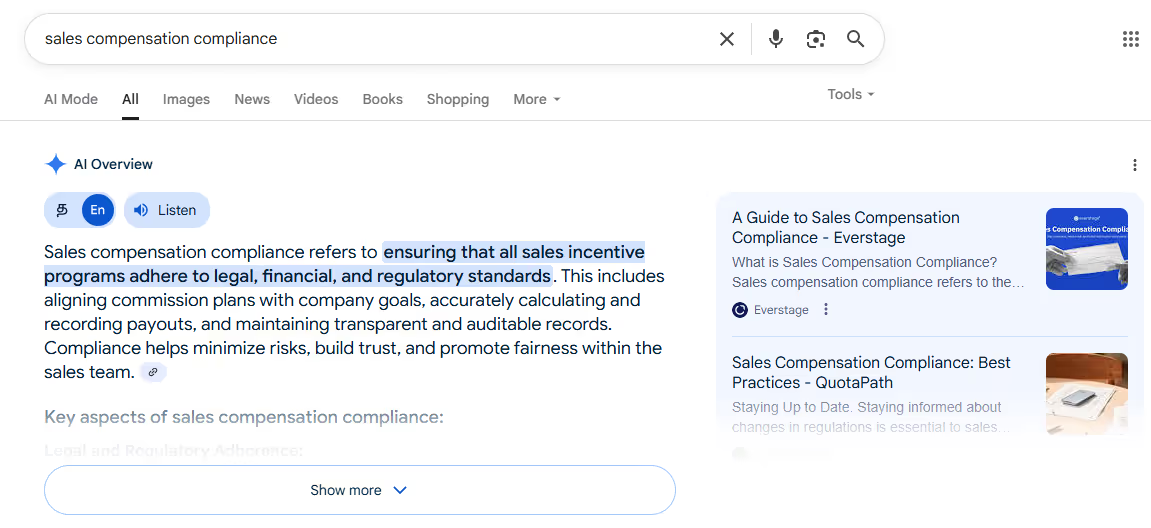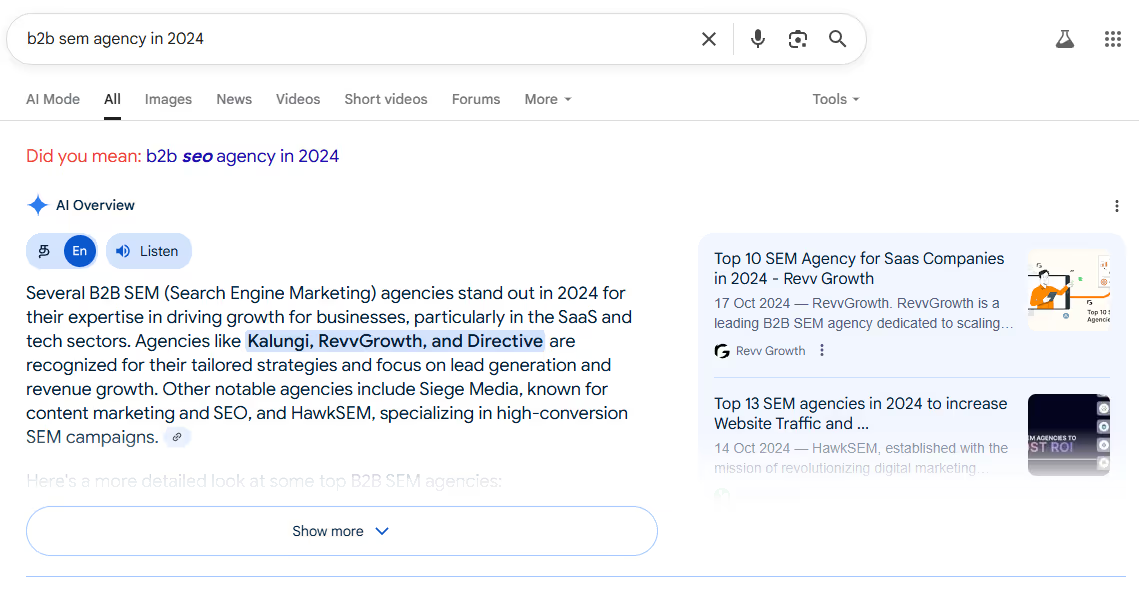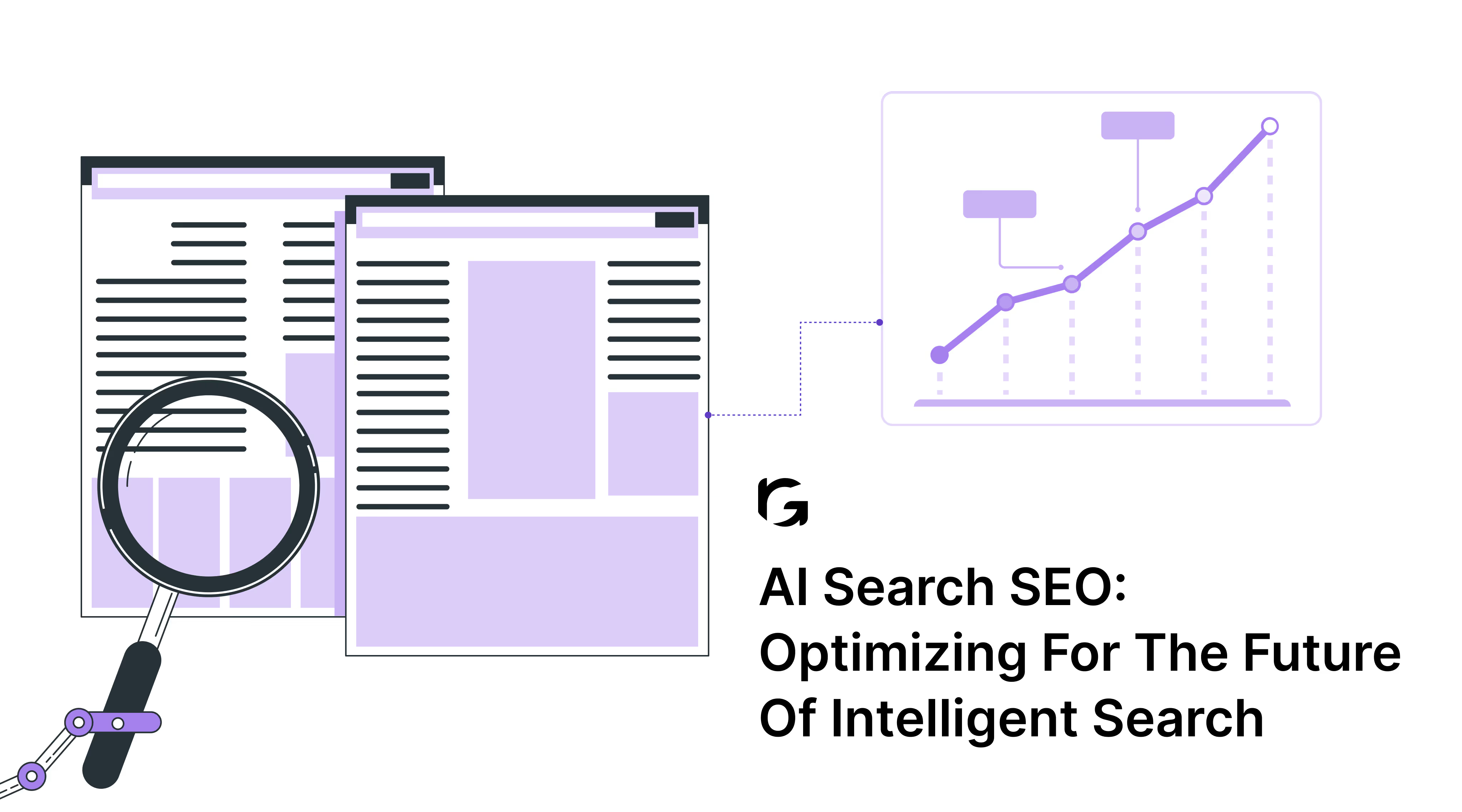Introduction
What if ranking #1 no longer guarantees traffic?
You did everything right from keywords and helpful content to strong rankings, and it worked. But now, traffic is quietly slipping. Rankings and impressions are steady, yet clicks are down.
Why? Search is changing.
AI Search SEO is redefining how visibility works. AI tools like Google’s SGE, Perplexity, and Bing Copilot now deliver direct answers, often without users visiting a site. AI doesn’t just quote top results. Nearly 89% of featured content comes from beyond the first 100 organic listings. It’s prioritizing deeper, high-quality sources based on an intent-focused approach and not just keyword ranking or traffic volume.
This guide shows how AI finds, formats, and features content, and how to align yours so it’s readable by both humans and machines.
What Is AI in Search SEO?
AI search SEO is the use of artificial intelligence to improve how content performs in search engines. It helps with keyword research, understanding user intent, and adapting to algorithm updates automatically.
AI tools can score content quality, structure it for better search visibility, and generate metadata, all in real time. This makes SEO faster, smarter, and more aligned with how people search today.

AI Search Engine Optimization Strategies (2025 Edition)
To stand out in an AI-first search landscape, your content needs more than rankings; it must be findable, quotable, and readable by both humans and machines.
Below are the most effective AI Search SEO strategies we use at Revv Growth to ensure visibility across AI summaries, featured snippets, and zero-click results
1. Identify What Both Humans and AI Are Searching For
Traditional keyword research won’t cut it anymore. AI search now rewards content that aligns with real user intent and machine interpretation. Study how people actually phrase questions on Reddit, Quora, and LinkedIn, and cross-check how AI tools like Perplexity, SGE, or ChatGPT answer them.
Strategy Tip:
Prioritize low-volume, high-clarity queries; they’re more likely to be cited by AI because they’re specific, contextual, and under-optimized.
This approach proved highly successful for Atlan, a B2B SaaS brand facing a common challenge: their blogs were ranking but weren't being cited in AI Overviews. We employed a key tactic in AI SEO for SaaS by analyzing community threads to understand the audience's true intent. We discovered they weren't using broad searches like "AI in operations," but rather specific, practical queries such as, "how to automate reporting with AI on a small team."

To turn wins like this into a consistent growth engine, you need a clear strategy behind topic selection and content planning.
Once you’ve identified high-intent topics, map them to your content calendar using a strong SEO strategy framework to ensure relevance and scalability.
2. Use AI to Draft and Structure the First 50%
AI accelerates the production process so your team can focus on insight, not repetition. Let AI tools like ChatGPT or Claude create first drafts, FAQs, or meta variations, while tools like Surfer SEO and Frase refine structure and keywords.
Strategy Tip:
Pair AI-assisted drafting with human review. Lucidworks used this hybrid approach and saw a 3× increase in pipeline, proving that AI-first drafting backed by human refinement drives both speed and results.
One customer of Lavender, an AI email assistant designed to help sales teams write better, faster outreach, Lucidworks Reply, saw a 42% increase in replies, 200% more meetings booked, and a 300% increase in pipeline after using AI-generated sales content and coaching. Their team used AI to draft follow-up frameworks and best-practice guides, then refined them with sales insights and product context, proving that smart use of AI in the first draft phase can directly impact bottom-line growth.
3. Add Human Depth and Voice
AI-generated text can sound flat; so use your expertise to add credibility and originality. Rewrite AI sections with brand tone, real-world examples, and insights that AI cannot replicate.
Strategy Tip:
Highlight internal data, client stories, or “how we solved it” insights. This human authenticity boosts trust signals, making your content more likely to be cited in AI summaries.
For example, our client, Everstage’s blog on sales compensation compliance, originally covered a legal-heavy topic. But by using clear language, concrete use cases, and internal knowledge of sales ops pain points, the piece earned a featured position in Google’s AI Overview. It now ranks ahead of older, more linked articles, because it teaches something real, in a way AI can trust and quote.

This ranking result is a direct outcome of humanizing the content with real insight, clarity, and brand voice.
4. Structure for AI Readability
AI Overviews don’t pick “optimized” blogs, they pick answer-ready ones. Organize your content into modular, scannable sections with headers that mirror real search questions.
Strategy Tip:
Start with a 40–60 word summary under each major heading, break paragraphs into short blocks, and phrase subheads like “How does AI affect SEO visibility?” instead of generic labels.
We’ve tested this approach across dozens of B2B SaaS blogs at Revv Growth. One blog post, structured entirely around community-sourced questions and clean formatting, was never optimized “for AI”, yet it started showing up consistently in AI Overviews.

As a result, there were higher branded recall and traffic from zero-click queries, even without traditional backlink wins.
5. Continuously Test and Refine
Visibility in AI summaries is dynamic. It changes based on clarity and structure. Track not just rankings but AI visibility by checking whether your content is being cited in ChatGPT, Perplexity, or Google’s AI Overviews.
Strategy Tip:
Refresh underperforming sections quarterly. Rework intros, questions, and summaries to match emerging AI prompt patterns. This keeps your content AI-visible even as algorithms evolve.
Around 60% of searches now end without a single click, thanks to AI Overviews pulling answers directly into the results page. If your content isn’t cited in that snapshot, it may not be seen at all. Leaving underperforming posts untouched isn’t an oversight. It’s a missed opportunity.

AI has blurred the line between SEO and content strategy. Your goal isn’t to “rank first” but to be the most answerable: the clearest, most structured response available.
Design each article to serve both intent and extraction. Content that’s easy for AI to lift into snapshots and useful enough that humans want to click through for more.
Why AI Is Reshaping Search Engine Optimization?
AI now surfaces direct answers, not just ranked links. If your content isn’t aligned for clarity and relevance, it gets overlooked in favor of more accessible, intent-matching responses. Visibility today depends on being the most useful and easily extractable answer, not just sitting at the top of the SERP.
Here’s why that matters:
1. AI-generated answers are replacing traditional search results
AI Overviews now appear in 47% of Google search results, and 58% of informational queries are answered directly by AI. If your content isn’t built to be cited or summarized by AI, it risks being skipped entirely. AI systems can synthesize information from multiple sources to deliver more complete and context-rich answers than a single page often can. As a result, search engines are prioritizing direct responses that save users time and effort.
2. AI is becoming central to SEO strategies
AI doesn’t just support search, it reshapes it. In fact, according to a joint study by Ahrefs and Amsive, click-through rates dropped by 34.5% for top-ranking results when an AI Overview appeared. That means even first-page rankings can become invisible if AI doesn’t cite your content.
3. SEO must serve both humans and machines
Old SEO habits like keyword stuffing or vague fluff no longer work. Instead, prioritize formatting, clarity, and actual user pain points, so AI models can parse, extract, and feature your content.
At Revv Growth, we shifted from “How do we rank?” to “What real problems are people trying to solve?” We shared this approach in a recent LinkedIn post that broke down how reframing our headers and intros led to AI Overviews citations, without chasing SEO hacks.
Conclusion
AI search SEO isn’t a nice-to-have. It’s how visibility works now. In an AI-first search experience, showing up in answers matters more than showing up in results.
Winning today means aligning with both user intent and AI behavior. Use AI tools to speed up research and drafting, but bring the human edge: clarity, original insight, and brand voice. Design your content for skimming, not scrolling.
Want to make sure AI finds and features your content?
At Revv Growth, we specialize in helping B2B brands adapt to this shift, structuring content that not only ranks, but gets quoted in AI summaries and featured snippets. If you're ready to make your content AI-visible and search-resilient, let’s talk.



.svg)



.webp)